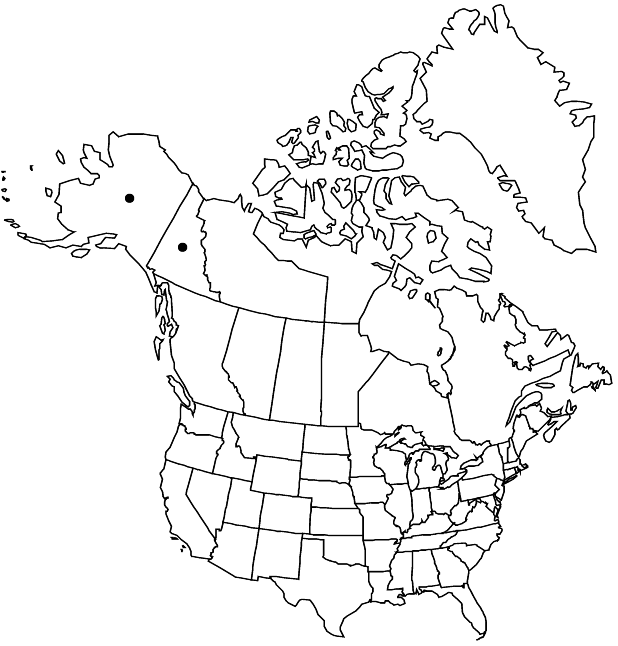Difference between revisions of "Boykinia richardsonii"
Rep. (Annual) Board Regents Smithsonian Inst. 1867: 447. 1868 ,.
FNA>Volume Importer |
FNA>Volume Importer |
Revision as of 23:01, 16 December 2019
Plants: rhizomes proliferating underground. Flowering stems 10–40(–60) cm. Basal leaves: petiole 2.5–10(–22.5) cm; blade usually reniform, shallowly lobed, rarely to 1/2 its length, 2–7(–12) × (3–)5–11(–15) cm, margins 2–3-times dentate. Cauline leaves: stipules (1–)2–5 mm, either expansions of petiole base and fringed with brown hairs, or foliaceous. Inflorescences narrowly cylindric, 3-flowered per primary branch. Pedicels densely stipitate-glandular. Flowers: hypanthium campanulate, free portion (1–)2–3 mm, densely stipitate-glandular; sepals erect, triangular to lanceolate, 3–7 mm, apex acute; petals sometimes with pink veins, ovate to elliptic, 8–12(–15) × 3–7 mm, 2–3(–5) times as long as sepals, base short-clawed, margins plane; nectary deep purple, sometimes greenish; stamens 3.3–5.2 mm; ovary subinferior. Capsules ovoid, turbinate, or urceolate. Seeds brown, smooth. 2n = 36, 84.
Phenology: Flowering summer.
Habitat: Stream-side gullies, snow-bed grassland and meadows, in open or in partial shade of Salix thickets
Elevation: 0-1700 m
Discussion
Boykinia richardsonii was originally misidentified as Saxifraga nelsoniana D. Don by W. J. Hooker and G. A. W. Arnott ([1830–]1841); the error was soon rectified. Reports of B. richardsonii from eastern Siberia (P. A. Rydberg 1905; H. G. A. Engler 1930) appear to be erroneous.
Selected References
None.
